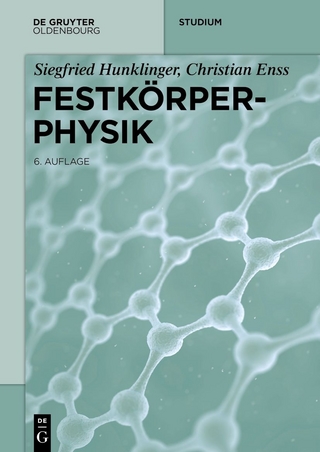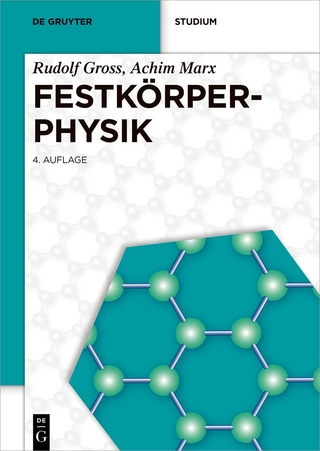
Thin Film Device Applications
Kluwer Academic/Plenum Publishers (Verlag)
978-0-306-41297-4 (ISBN)
- Titel ist leider vergriffen;
keine Neuauflage - Artikel merken
With the impetus provided by industrial applications, the science and technology of thin films have undergone revolutionary development and even today continue to be recognized globally as frontier areas of RID work. Major technical developments in any field of science and technology are invariably accompanied by an explosion of published literature in the form of scientific publications, reviews, and books.
1. Thin Film Technology. An Introduction.- 1.1. Why Thin Films?.- 1.2. Thin Film Growth Process.- 1.2.1. Structural Consequences of the Growth Process.- 1.2.2. Solubility Relaxation.- 1.3. Vapor Deposition Techniques.- 1.3.1. Physical Vapor Deposition (PVD).- 1.3.2. Chemical Vapor Deposition (CVD).- 1.4. Solution Deposition Techniques.- 1.4.1. Chemical Solution Deposition (CSD).- 1.4.2. Electrochemical Deposition (ECD).- 1.5. Thick Film Deposition Techniques.- 1.5.1. Liquid-Phase Epitaxy (LPE).- 1.5.2. Screen Printing.- 1.5.3. Melt Spinning.- 1.5.4. Dip Coating, Spinning, and Solution Casting.- 1.6. Monitoring and Analytical Techniques.- 1.6.1. General Remarks.- 1.6.2. Deposition Rate and Thickness Measurement.- 1.6.3. Structural Analysis.- 1.6.4. Composition Analysis.- 1.7. Microfabrication Techniques.- 2. Thin Films In Optics.- 2.1. Optics of Thin Films.- 2.2. Antireflection Coatings (AR Coatings).- 2.2.1. Single-Layer AR Coatings.- 2.2.2. Double-Layer AR Coatings.- 2.2.3. Multilayer and Inhomogeneous AR Coatings.- 2.3. Reflection Coatings.- 2.3.1. Metal Reflectors.- 2.3.2. All-Dielectric Reflectors.- 2.4. Interference Filters.- 2.4.1. Edge Filters.- 2.4.2. Band-Pass Filters.- 2.5. Thin Film Polarizers.- 2.6. Beam Splitters.- 2.6.1. Polarizing Beam Splitter.- 2.6.2. Dichroic Beam Splitter.- 2.7. Integrated Optics.- 2.7.1. Waveguides.- 2.7.2. Thin Film Optical Components.- 2.7.3. Passive Devices: Couplers.- 2.7.4. Active Devices.- 3. Optoelectronic Applications.- 3.1. Introduction.- 3.2. Photon Detectors.- 3.2.1. Photoconductive Detectors.- 3.2.2. Photoemissive Detectors.- 3.3. Photovoltaic Devices.- 3.3.1. Solar Cells: General Analysis.- 3.3.2. Thin Film Solar Cells.- 3.4. Applications in Imaging.- 3.5. Electrophotography (Xerography and Electrofax).- 3.6. Thin Film Displays.- 3.6.1. Electroluminescent (EL) Displays.- 3.6.2. Electrochromic Displays.- 3.7. Information Storage Devices.- 3.7.1. Introduction.- 3.7.2. Optical Hole Memories.- 3.7.3. Holographic Memories.- 3.8. Amorphous Silicon-Based Devices.- 4. Microelectronic Applications.- 4.1. Introduction.- 4.2. Thin Film Passive Components.- 4.2.1. Electrical Behavior of Metal Films.- 4.2.2. Dielectric Behavior of Insulator Films.- 4.2.3. Resistors.- 4.2.4. Capacitors.- 4.2.5. Inductors.- 4.2.6. Conductors (Interconnections and Contacts).- 4.3. Thin Film Active Components.- 4.3.1. Thin Film Transistor (TFT).- 4.3.2. Thin Film Diodes.- 4.4. Thin Film Integrated Circuits.- 4.5. Microwave Integrated Circuits (MICs).- 4.6. Surface Acoustic Wave (SAW) Devices.- 4.6.1. Introduction.- 4.6.2. SAW Transducer.- 4.6.3. SAW Delay Line.- 4.6.4. SAW Band-Pass Filter.- 4.6.5. SAW Pulse-Compression Filter.- 4.6.6. SAW Amplifier.- 4.6.7. SAW Guiding Components.- 4.6.8. Other Applications.- 4.7. Charge-Coupled Devices (CCDs).- 4.7.1. Introduction.- 4.7.2. Principle.- 4.7.3. Applications.- 4.8. Thin Film Strain Gauges.- 4.9. Gas Sensors.- 5. Magnetic Thin Film Devices.- 5.1. Magnetic Thin Films.- 5.1.1. Introduction.- 5.1.2. Uniaxial Anisotropy (UA).- 5.1.3. Domains and Domain Walls.- 5.1.4. Switching in Thin Films.- 5.2. Applications.- 5.2.1. Computer Memories.- 5.2.2. Domain-Motion Devices.- 5.2.3. Thin Film Magnetic Heads.- 5.2.4. Magnetic Displays.- 6. Quantum Engineering Applications.- 6.1. Introduction.- 6.2. Basic Concepts.- 6.3. Superconductivity in Thin Films.- 6.4. S-N Transition Devices.- 6.4.1. Switching Devices.- 6.4.2. Cryotron Amplifiers.- 6.4.3. Computer Memory Devices.- 6.5. Superconductive Tunneling Devices.- 6.5.1. Quasiparticle (Giaever) Tunneling.- 6.5.2. Pair (Josephson) Tunneling.- 6.5.3. SQUIDs.- 6.5.4. Applications of SQUIDs.- 6.5.5. Superconducting Electronics.- 6.6. Miscellaneous Applications.- 7. Thermal Devices.- 7.1. Introduction.- 7.2. Thermal Detectors.- 7.2.1. Bolometers and Thermometers.- 7.2.2. Thermocouples and Thermopiles.- 7.2.3. Pyroelectric Detectors.- 7.2.4. Absorption-Edge Thermal Detectors.- 7.3. Thermal Imaging Applications.- 7.4. Photothermal Conversion.- 7.4.1. Metallic Surfaces.- 7.4.2. Metal-Semiconductor Tandems.- 7.4.3. Metal-Semiconductor Mixed Coatings.- 7.4.4. Interference Stacks.- 7.4.5. Particulate Coatings.- 7.4.6. Topological Coatings.- 8. Surface Engineering Applications.- 8.1. Introduction.- 8.2. Surface Passivation Applications.- 8.2.1. Coatings of Reaction Product.- 8.2.2. Metallic Coatings.- 8.2.3. Inorganic Coatings.- 8.2.4. Organic Coatings.- 8.3. Tribological Applications.- 8.3.1. Wear-Resistant Coatings.- 8.3.2. Lubricating Coatings.- 8.4. Decorative Applications.- 8.5. Miscellaneous Applications.- 8.5.1. Adhesion-Promoting Coatings.- 8.5.2. Preparation of Heterogeneous Catalysts.- 8.5.3. Preparation of Nuclear Fuels.- 8.5.4. Fabrication of Structural Forms.- 8.5.5. Biomedical Applications.- References.
| Zusatzinfo | biography |
|---|---|
| Sprache | englisch |
| Themenwelt | Naturwissenschaften ► Physik / Astronomie ► Festkörperphysik |
| Technik ► Elektrotechnik / Energietechnik | |
| ISBN-10 | 0-306-41297-7 / 0306412977 |
| ISBN-13 | 978-0-306-41297-4 / 9780306412974 |
| Zustand | Neuware |
| Haben Sie eine Frage zum Produkt? |
aus dem Bereich


